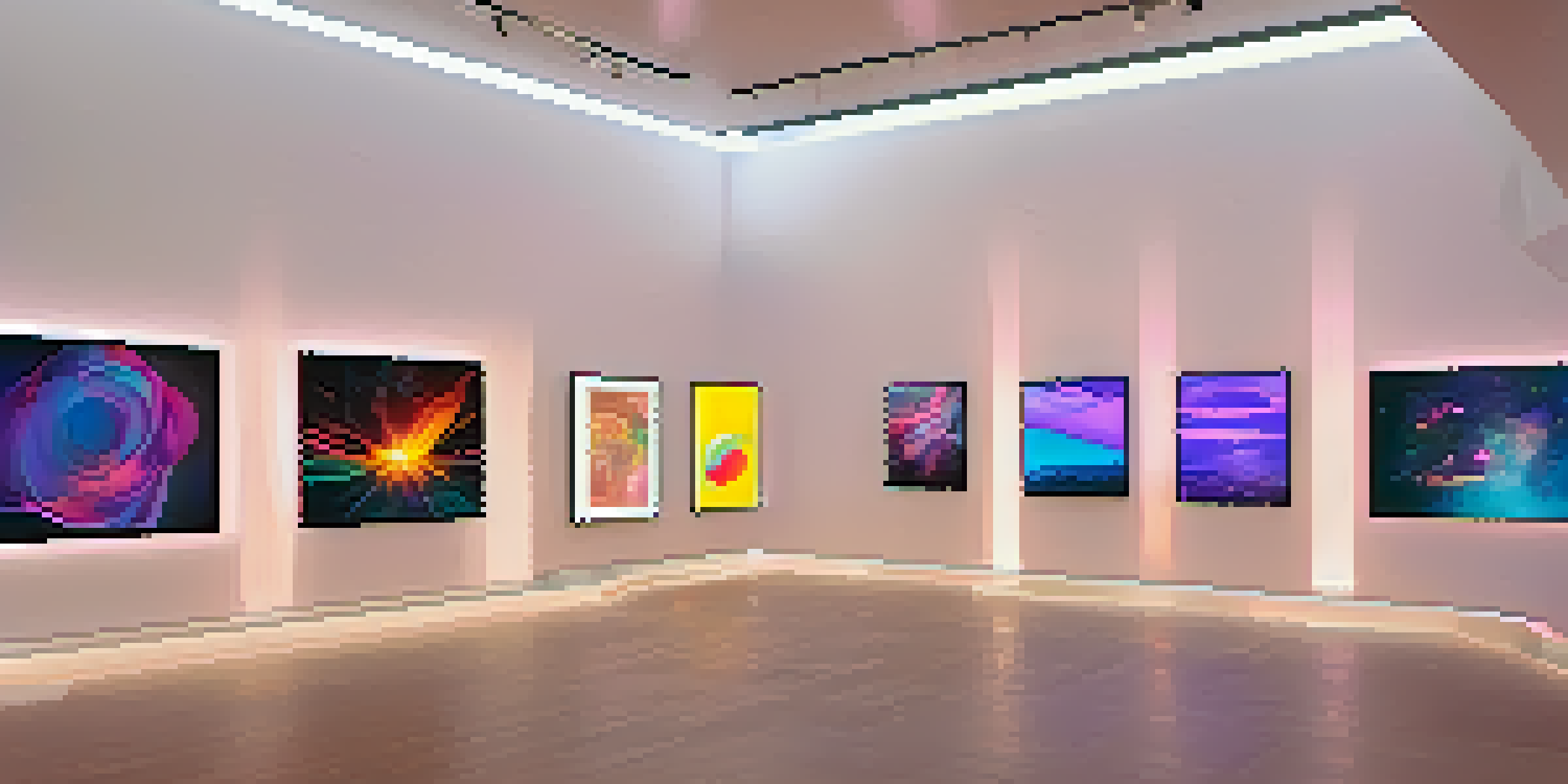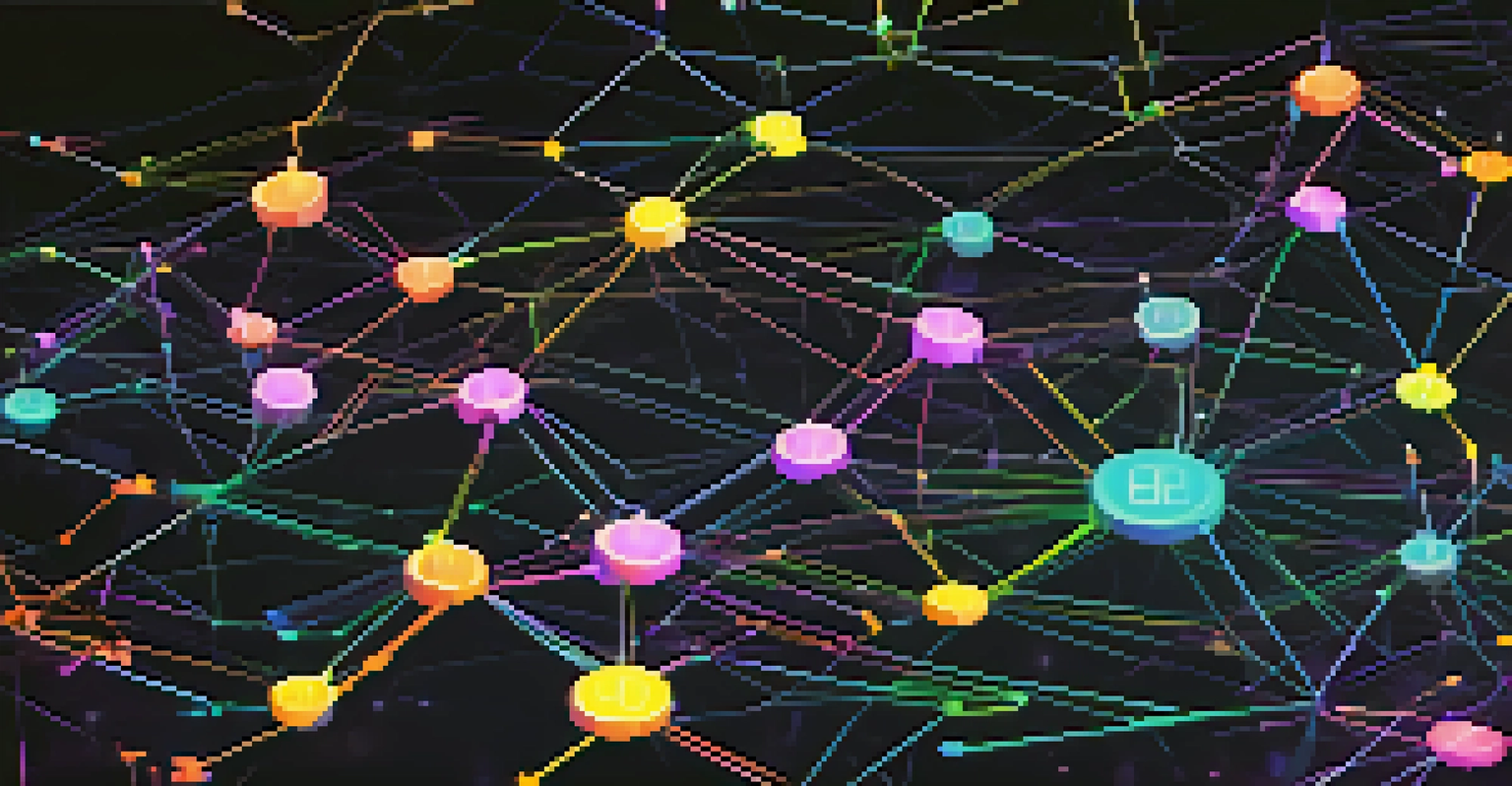The Role of NFTs in Empowering Creators and Their Rights

Understanding NFTs and Their Importance for Creators
NFTs, or non-fungible tokens, are unique digital assets stored on a blockchain. Unlike cryptocurrencies, which are interchangeable, each NFT has distinct characteristics that set it apart. This uniqueness gives creators a powerful tool to showcase and sell their work in the digital realm, from art to music and beyond.
NFTs have the potential to redefine ownership in the digital world, giving creators a direct path to their audience.
The rise of NFTs has transformed the way creators monetize their work. By allowing artists to sell their creations directly to consumers without intermediaries, NFTs eliminate many traditional barriers in the art and entertainment industries. This direct connection can lead to higher profits for artists and a more engaged audience.
Moreover, NFTs provide a sense of ownership and authenticity in a digital world often plagued by piracy and replication. When someone buys an NFT, they gain verifiable ownership of an original piece, which can enhance the perceived value of the work. This shift is crucial in empowering creators and affirming their rights over their intellectual property.
The Financial Benefits of NFTs for Creators
Financially, NFTs offer creators new revenue streams that were previously unavailable. Artists can earn money not only from the initial sale but also from royalties on future sales, thanks to smart contracts embedded in the NFT. This means that as a piece of art changes hands, the original creator continues to benefit financially.

For instance, if an artist sells a digital painting as an NFT, they might earn a 10% royalty every time it’s resold. This ongoing revenue model can provide creators with a sustainable income, which is particularly beneficial in a gig economy where traditional income sources can be unpredictable.
NFTs Empower Creators' Rights
NFTs allow artists to maintain ownership and control over their work, ensuring they benefit financially and protect their artistic vision.
Additionally, the ability to reach global audiences through digital platforms expands market opportunities. Creators no longer need to rely on galleries or agents to find buyers; they can showcase their work on NFT marketplaces accessible from anywhere in the world.
Empowering Artists with Ownership and Control
One of the most significant advantages of NFTs is the empowerment they offer artists regarding ownership and control of their work. Traditionally, creators often relinquished rights to their art when working with galleries or publishers. However, with NFTs, artists maintain control over their creations throughout their lifecycle.
With blockchain technology, artists can finally reclaim their rights and control over their creations.
This empowerment means that artists can dictate how their work is used and can even set conditions for its resale. For example, they can choose to limit how many copies of their work are created or decide whether it can be altered. This level of control helps creators protect their artistic vision and integrity.
Furthermore, the transparency of blockchain technology ensures that ownership and transaction history are easily verifiable. This transparency builds trust between artists and buyers, reinforcing the idea that creators have a rightful stake in their work.
Enhancing Creator Rights Through Smart Contracts
Smart contracts play a pivotal role in the NFT space by automating transactions and enforcing agreements between creators and buyers. These self-executing contracts are coded directly into the NFT, ensuring that the terms of the sale are honored without requiring intermediaries. This not only streamlines the process but also reduces the risk of disputes.
For instance, a smart contract can automatically distribute royalties to an artist every time their NFT is resold, ensuring they are compensated fairly for their work. This technological innovation significantly enhances creators' rights and their ability to earn a living from their art.
New Revenue Streams via Royalties
Creators can earn ongoing income through royalties on future NFT sales, providing a sustainable revenue model in a gig economy.
Moreover, smart contracts can include various stipulations, such as restrictions on how the work can be displayed or shared. This flexibility allows creators to maintain their artistic intent and protects them from potential misuse of their work.
Building Community and Engagement with Fans
NFTs foster a sense of community and engagement between creators and their fans. By purchasing an NFT, fans often feel a deeper connection to the artist, as they are participating in a shared experience. This emotional investment can transform casual fans into loyal supporters.
Many creators are leveraging this connection by offering exclusive content or experiences to NFT holders. For example, an artist might provide early access to new works, behind-the-scenes content, or even personal interactions through virtual events. This approach not only enhances the value of the NFT but also strengthens the bond between creators and their audience.
Such engagement can lead to a more sustainable fan base, as supporters feel valued and appreciated. In turn, this community-building aspect of NFTs can help creators thrive in a competitive landscape.
Challenges Creators Face in the NFT Space
While NFTs present numerous opportunities, they also come with challenges that creators must navigate. One significant hurdle is the environmental impact associated with blockchain technology, particularly with platforms that rely on energy-intensive proof-of-work systems. Many artists are concerned about how their work might contribute to carbon emissions.
Additionally, the NFT market can be volatile, with the value of digital assets fluctuating dramatically over short periods. This unpredictability can discourage some creators from fully committing to the space, especially if they are unsure about the long-term viability of their work as NFTs.
Challenges in the NFT Landscape
Despite opportunities, creators face challenges such as environmental concerns, market volatility, and a steep learning curve in navigating NFTs.
Lastly, understanding the technical aspects of NFTs can be daunting for creators who are not tech-savvy. The learning curve associated with setting up wallets, minting NFTs, and navigating marketplaces can be overwhelming. As such, support and education are critical to ensuring that all creators can benefit from this innovative landscape.
The Future of NFTs and Creator Empowerment
Looking ahead, the future of NFTs appears bright, particularly in terms of creator empowerment. As technology continues to evolve, we may see the emergence of more user-friendly platforms that simplify the process of creating and selling NFTs. This accessibility could open the doors for a broader range of artists and creators, democratizing the digital art space.
Furthermore, as public awareness of NFTs grows, we can expect increased demand for unique digital assets. This trend will likely encourage more creators to explore NFT options, fostering a diverse ecosystem of art and content that reflects a variety of perspectives and styles.

Ultimately, the ongoing development of NFTs and related technologies could lead to a more equitable landscape for creators. With better tools and resources, artists can reclaim their rights, enhance their financial stability, and build lasting connections with their audiences.